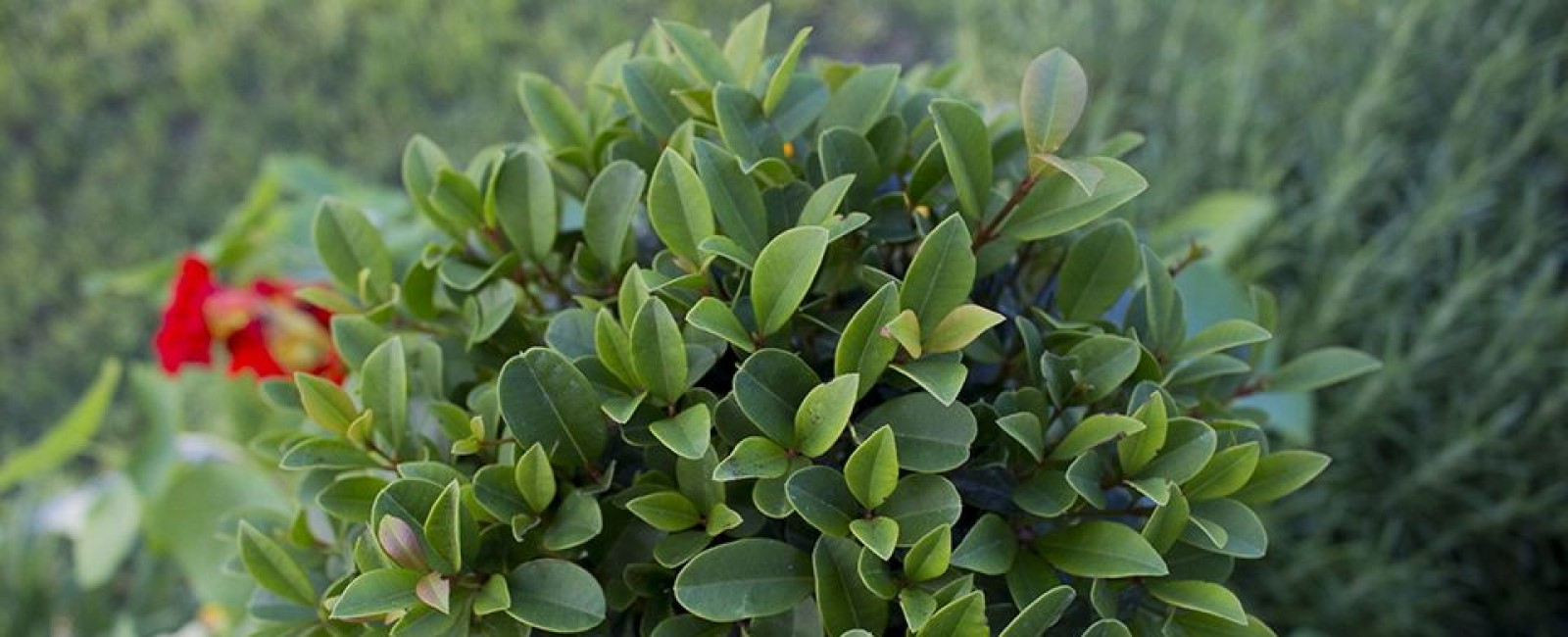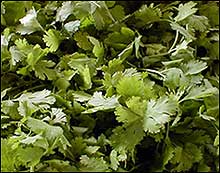| A Passionate Appetite for Cilantro | |
|
Annual Culinary, Ornamental 3 feet high, 1 food wide Full sun: partial shade in hot regions Average to well drained soil |
As we move into the cooler month of September, we would like to revisit Cilantro/Coriander as our Herb of the MonthCoriander, Cilantro, Coriandrumsativum – Fresh cilantro, is also called Chinese parsley. Fresh cilantro has an assertive culinary personality. Even in the smallest quantities, it makes its presence felt. No one asks, “What is that subtle flavor?” It has a piquant taste, that is acquired. A rich source for vitamins C and A. |
 Cilantro grows as a slender, upright annual to 3 feet high. Leaves that emerge on its main stems are oval with toothed edges. Leaves growing on upper side branches are more lacy and delicate, resembling those of anise or dill.
Cilantro grows as a slender, upright annual to 3 feet high. Leaves that emerge on its main stems are oval with toothed edges. Leaves growing on upper side branches are more lacy and delicate, resembling those of anise or dill.
As the season warms, a central flower stalk branches into beautiful, umbrella-shaped clusters of small, off-white, mauve or lavender flowers. Seeds are inside tiny round fruit that splits in half when dried. Fresh seeds have an unpleasant, musty, bedbug odor. Dried seeds have a pleasant, orange-spice aroma and flavor that increase with maturity.
Planting and Care
One of the easiest herbs to grow from seed in climates where a March sowing is possible. Prefers relatively dry conditions, evenly distributed moisture and even temperatures. It cannot tolerate constant moisture. A sun loving herb; locate in partial shade in hot regions. In the deep South part of the U.S. you can plant Cilantro in the Fall and it will grow throughout the Winter months. To counter Coriander’s tendency to go to seed rapidly with the onset on long, warm days, growers have developed ‘Long Standing’, a slow-to-bolt cultivar. Harvests of fresh leaves are extended about 14 days. Whatever kind you grow, cut leaves frequently and stagger sowings to provide continued harvests. Like dill, cilantro should be planted away from fennel, which can adversely affect its flavor. Its musty odor tends to repel nibbling insects.
Harvesting and Use
Coriander is grown for both its seeds and leaves. Harvest leaves when the plants reach about 6 inches high and gather seedheads when the small fruits are brown. The leaves work well in salads, soups, chicken, meat and sauces, and of course salsas. Use one to two teaspoons per serving. The dried seeds which have a warm, nutty, floral aroma when ground spices up fish, curries, fowl, pork, soups, sauces, breads and cookies.


